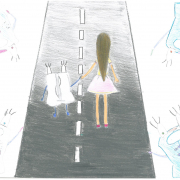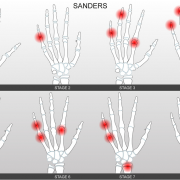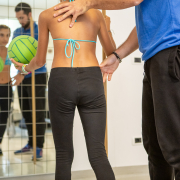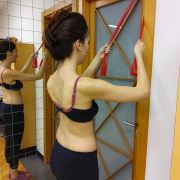Your brace, an “accessory” that makes you unique
Every era has its own fashion corset, you might say, if you think of the various ways, in which this particular garment has been used over the years.
First created in the sixteenth century, it has always been intended to enhance the female silhouette by the aesthetic canons of the times. Worn under clothes, it modified the shape of the body. It has undergone a continuous process of evolution to the point of becoming, nowadays, an actual item of clothing—a fashion garment that, again for aesthetic reasons, is deliberately left visible.
The well-known TV series Bridgerton, which features women in Regency-style corsets, has brought them back into vogue, so much so that, in the name of gender equality, male models are now even wearing them on catwalks. And, as we saw on the red carpet at the Oscars, corsets appeal both to Gen Z and over-60s celebrities, with Halle Bailey and Jamie Lee Curtis both appearing in Dolce & Gabbana ones.
Although the orthopaedic braces used in the rehabilitation treatment of scoliosis are created with a completely different function in mind, they, too, are worn to achieve a better silhouette. Indeed, one of their purposes is undoubtedly to improve the appearance of the patient’s back, as well as its health, of course.
Whenever we mention corrective braces, the initial response is always one of fear and dismay because the first image that springs to mind is that of some object that is impossible to disguise under clothes. We might think, for example, of the Milwaukee brace (now hardly ever used anywhere in the world), which even has a kind of chin rest that clearly can’t be concealed under clothing. However, thanks to research and continuous efforts to develop treatments that are the least invasive possible, the braces being produced nowadays are not only more and more effective as corrective devices, but also increasingly close-fitting and therefore impossible to see under clothes. One example is the Sforzesco brace, developed by ISICO, which is just as effective as casting.
Familiarity with these somewhat “awkward accessories” has grown in recent years as people are encouraged to regard them (whatever type they are) as objects that are just a part of everyday life and don’t need to be covered up. Actually, plastic braces now even exist that can be customized with different Thermo adhesive designs.
It’s a bit like the situation with glasses: frames have increasingly evolved, following fashion, and today the variety available is so great that there is something for all tastes, particularly eccentric styles. In this way, a person’s glasses are now a fundamental part of their style and identity. Their purely medical function has been combined with a strong aesthetic component, turning them into true accessories.
Similarly, dental braces have become increasingly customisable, and limb prosthetics, in part thanks to athletes, are now part of everyday life too. Indeed, many of those who wear them are happy to show them off as they are part of what makes them unique.
All these are examples of “awkward accessories” that are now a part of everyday life. And why shouldn’t this also be true of the corrective braces worn by young scoliosis patients?
My next comments are aimed directly at those who wear braces or are about to start doing so.
Just like glasses, dental braces or limb prosthetics, a scoliosis brace should be seen, and treated, as something that sets you apart, but in a positive way, as something that is peculiar to you — something that makes you special, stronger and more self-confident, while also caring for your back. Although this might initially sound impossible, over time you really will come to see it as a strength.
You might think, “it’s easy for the physiotherapist to talk. They haven’t actually gone through this. We patients are the ones who have to wear these things, and only we can really know what it feels like.”
Well, this is where, as a physiotherapist, I am able to draw on my own experience as a former patient. I lived with a brace for 7 years, wearing it full-time to begin with. And on the basis of that experience, I feel compelled to urge all youngsters who are embarking on, or about to embark on, this journey to use their brace and see it as a distinguishing feature, something to joke about with friends, something that makes you unique and will help you in your adult life (even though I realise that when you’re young it’s hard to think that far ahead).
Erica, former ISICO patient and now ISICO therapist










Leave a Reply
Want to join the discussion?Feel free to contribute!